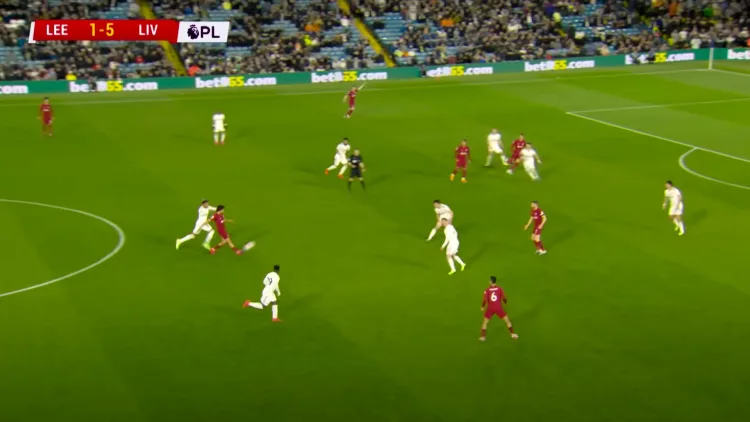-
Feature
- 16 hours ago
Should Liverpool really use Trent Alexander-Arnold in midfield?

Every few months, the topic of conversation turns to whether or not Trent Alexander-Arnold should be used in midfield. There are a variety of reasons for this particular discussion.
On occasions, he'll have a defensive nightmare and people want him moved out of defence. Other times, Liverpool's midfield puts in a disasterclass and people float the idea to move the right-back into the middle third as a potential solution. The 24-year-old might put in a creative masterclass and this sparks the idea that he could do that on a more regular basis as a midfielder.
Up until now, the idea of using Alexander-Arnold in midfield has been theoretical. It had never happened but in Liverpool's last two matches, Jurgen Klopp has deployed his No.66 as an inverted full-back. In possession, the England international has formed a double pivot alongside Fabinho and he's arguably put in two of his best performances this season.
READ: Alexander-Arnold tipped as next Coutinho as Liverpool seek new Alisson and Van Dijk
He played four key passes and registered an assist against Arsenal before putting on a passing clinic in the 6-1 win over Leeds United. Alexander-Arnold attempted 136 passes against Javi Gracia's men, finding a teammate 91% of the time. He also chipped in with two assists.
For a little context here, prior to the game against Leeds, the right-back was averaging 66 passes per 90 and had a pass completion of 77%. The new role has seen him much more involved. He's basically been a deep-lying playmaker for Liverpool and it coincides with the Reds scoring eight goals across two matches.
It was inevitable that there would be a clamour for Alexander-Arnold to be used permanently in midfield after these displays. So we thought we'd take a look at the pros and cons of taking the leap and committing to using the full-back in the middle third.
READ: "Trent out, Liverpool have a chance" - Twitter reacts to Alexander-Arnold benching
Pros
If the 18-cap England international was deployed on the right side of a midfield three, he would be, in theory at least, impact the game offensively on a more regular basis.
He's assisted three in two since the change and became only the third defender in Premier League history to rack up 50 assists.
All three assists have come as a result of him popping up in more central areas. For example, against Arsenal, he was able to make an underlapping run into space to set up the equaliser. For the opener against Leeds, he stepped up to press Junior Firpo after losing the ball knowing the hybrid role facilitated this.
His clipped pass for Liverpool's sixth arrived when the No.66 was smack bang in the middle of the pitch, as seen below.

In theory, the more time spent in that area of the pitch, the more chances he will be able to create for the Reds.
Furthermore, if Alexander-Arnold is viewed as a midfielder, it eases the middle-third overhaul Liverpool have planned for this summer. Instead of needing to bring in up to four, they might be able to get away with just two new arrivals.
Cons
Well, the No.66 hasn't been used as a midfielder. He's been utilised as an inverted full-back which gives him the freedom he definitely wouldn't have as part of a midfield three in this Liverpool team.
He's been able to pull the strings against Arsenal and Leeds because of this. The case study shows he has the ability to impose himself on the game as an auxiliary fourth midfielder having shuffled over from full-back.
Starting him in midfield is completely different to having him move into midfield. If he was deployed on the right side of a three, he would have different tasks such as overlapping and underlapping to create space and opportunities for Salah. He would be part of the first phase of pressing too, putting more emphasis on his off-the-ball work.
Jordan Henderson played ahead of Alexander-Arnold against Leeds and had half the number of touches and attempted half the number of passes. If the right-back replaced the skipper in midfield, he's likely going to post similar numbers to the No.14 and this takes away from what has made him so effective in recent games.
If somehow Liverpool were able to generate the volume for Alexander-Arnold in midfield, other players would suffer in accommodating such a spike in touches and passes. It could well work but there's every chance it doesn't. The Reds have tried a number of systems this season and a fair few of them have failed.
Is the risk really worth the reward in this instance? Especially when he's thriving in this dual role?



















